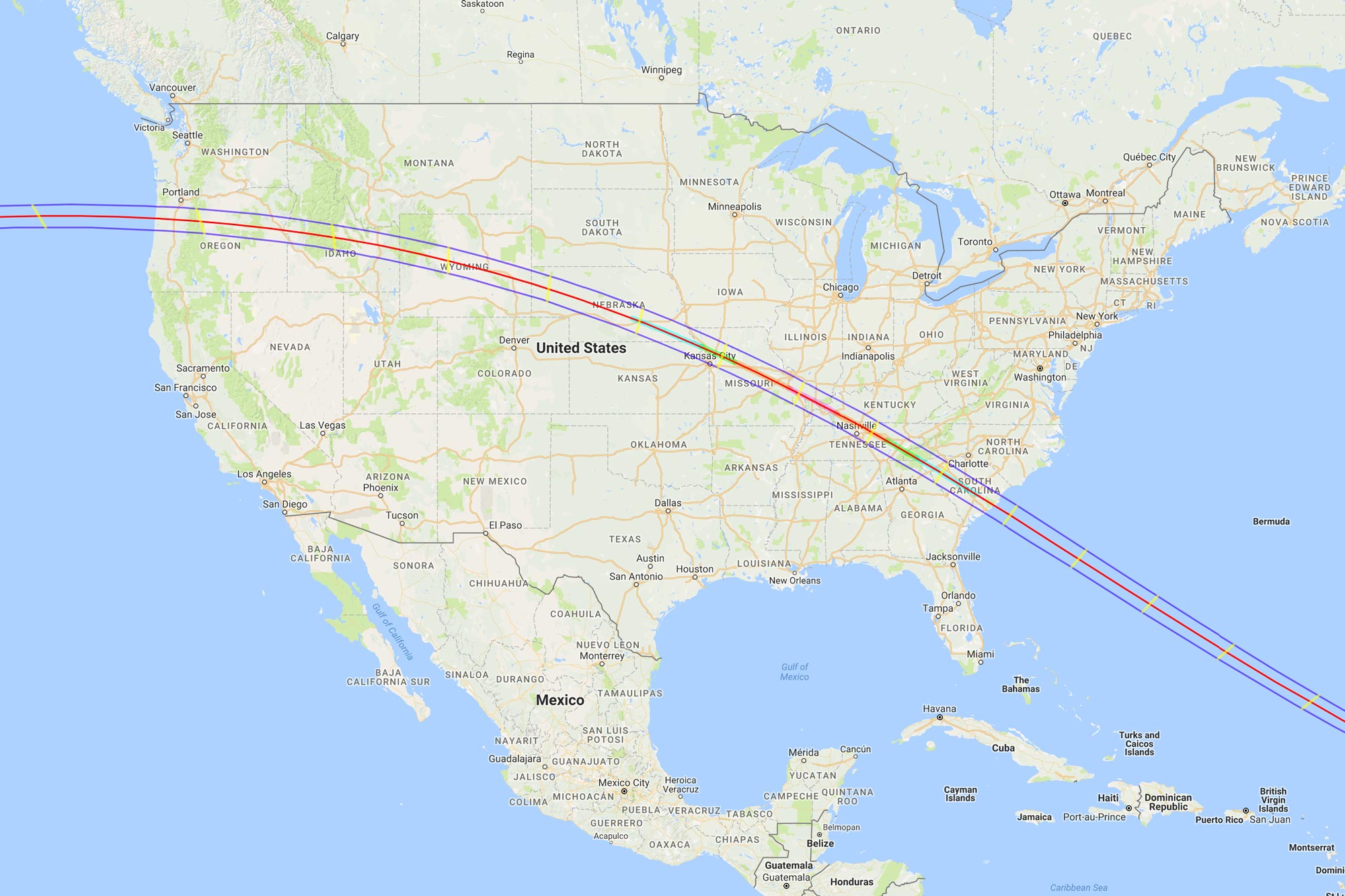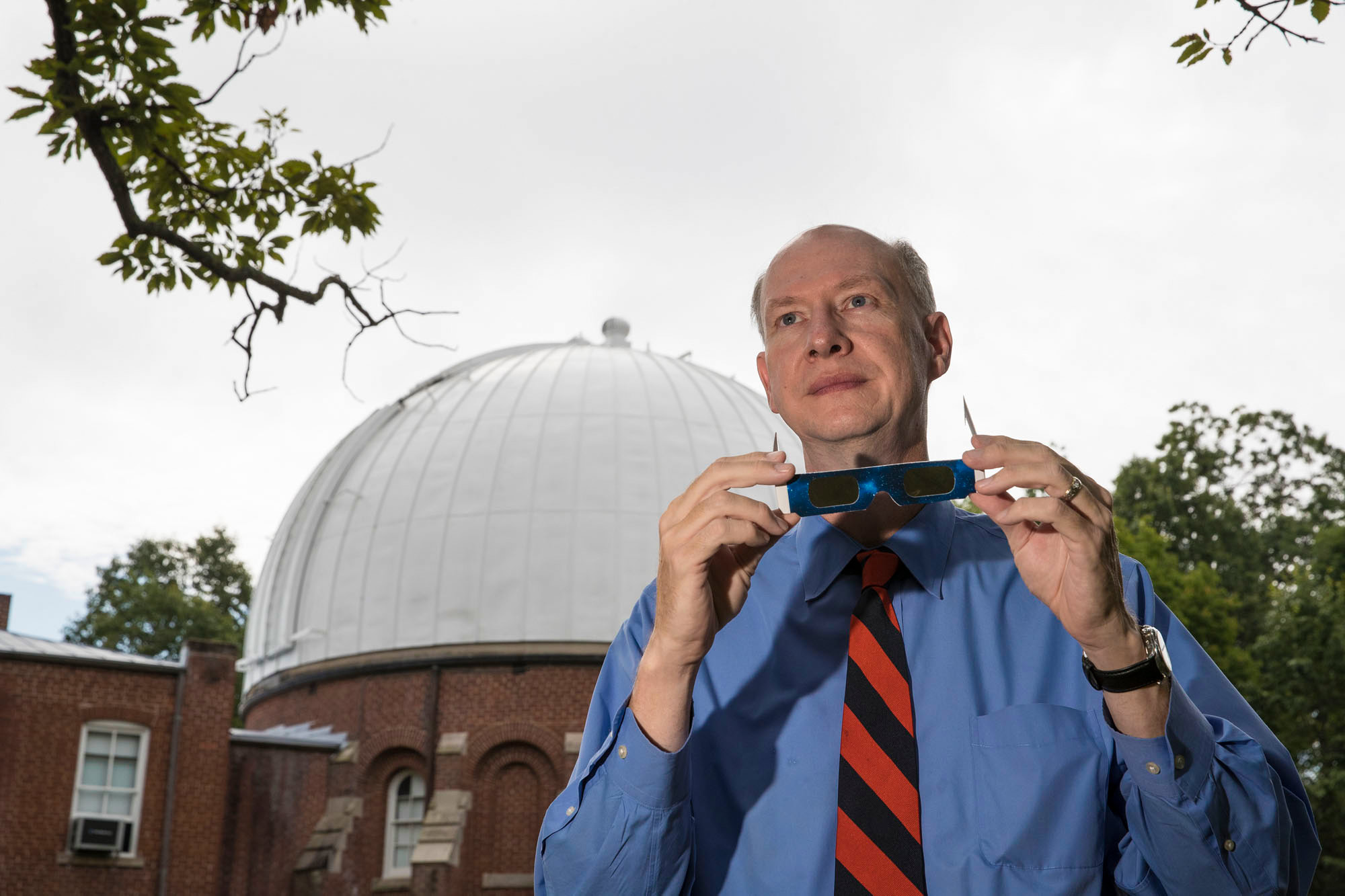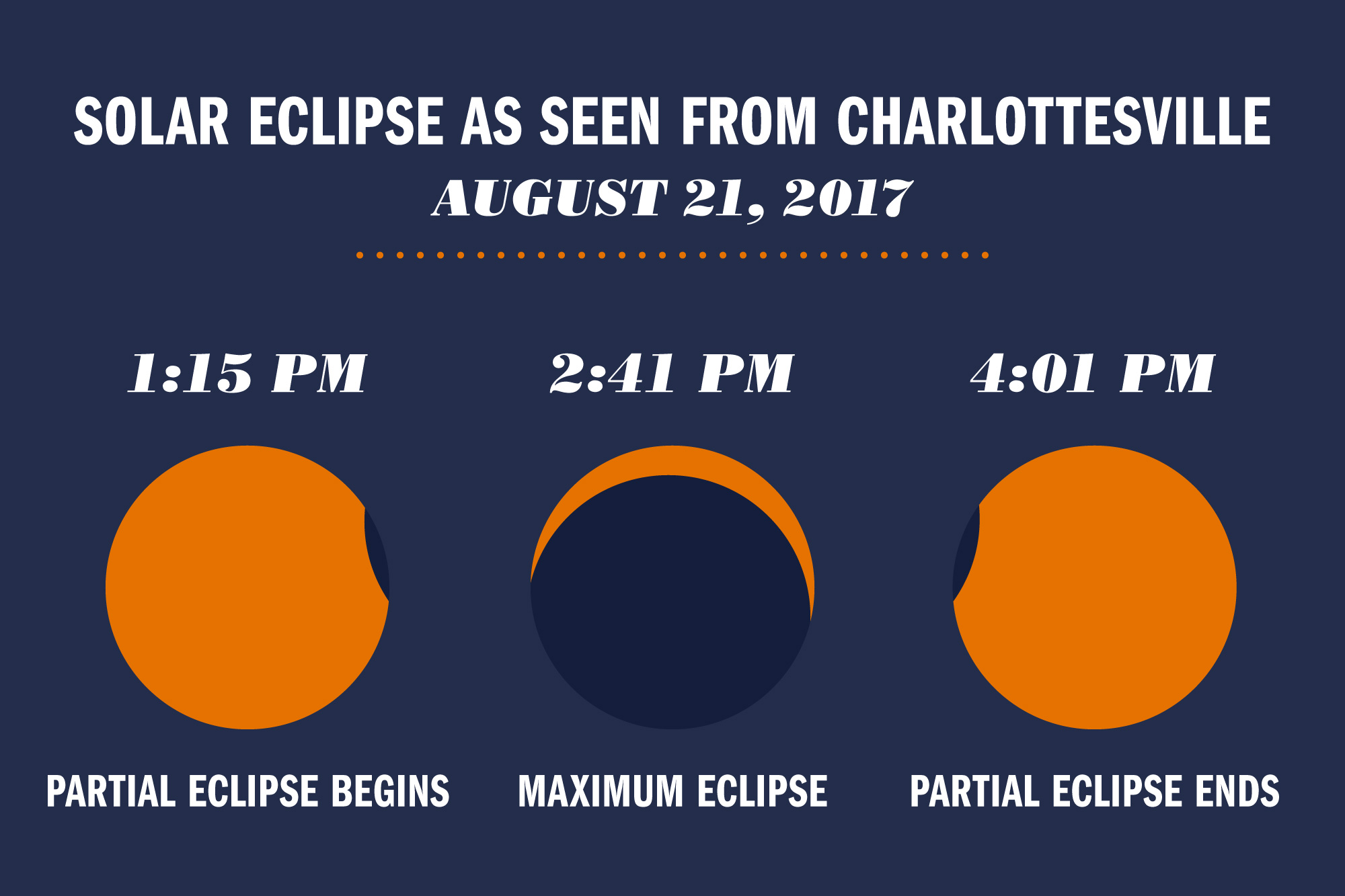On Monday, the moon will eclipse the sun, sending a moving daylong shadow trail across the continental United States, from the Pacific Northwest to the coast of South Carolina. This will be the first total eclipse of the sun in the contiguous U.S. since 1979.

While millions of Americans will witness “totality” along a narrow, 70-mile-wide band, hundreds of millions more will be able to view a partial eclipse. In Charlottesville, the moon will block out 86 percent of the sun’s disk.
University of Virginia astronomer Ed Murphy, who has twice traveled internationally to view total eclipses of the sun, cautions that viewers must wear solar eclipse viewing glasses, certified by the International Organization for Standardization (ISO), whether for viewing a total solar eclipse anywhere along the path of totality or for a partial eclipse, as in Charlottesville.
Observing an eclipse with the bare eyes, regular sunglasses or counterfeit glasses (which unfortunately are being sold through some online sources – with the ISO logo bogusly printed on the frame) will cause severe and permanent eye damage.
“Trustworthy eclipse glasses are specially made to block ultraviolet and infrared light and are verified as safe by accredited testing laboratories,” Murphy said. “Solar eclipse glasses should be purchased or obtained from reliable sources and made by established manufacturers according to ISO standards.”
The American Astronomical Society offers several vendor recommendations here. For more safe viewing tips, visit this page of the American Academy of Ophthalmology.

Astronomer Ed Murphy with a pair of certified solar eclipse glasses. On Monday, he will serve as a scientific consultant at a public viewing event in South Carolina. (Photo by Dan Addison, University Communications)
In Charlottesville, the partial eclipse will begin Monday at 1:15 p.m., max out to 86 percent coverage at 2:41 p.m., and conclude at 4:01 p.m. as the moon moves fully away from the sun’s disk. Even at the height of the eclipse, the day will remain bright; it is only within the path of totality that the day becomes as dark as night for a minute or two or more, depending on location.
In Charlottesville, the sun will look like this during the eclipse:

Murphy said the closest, best places to view the total eclipse will be in parts of South Carolina, Kentucky and Tennessee. But avid sky watchers have been planning for this event for months to years, so hotels and camping sites along the path of totality likely are booked. Traffic along Interstate 95 is expected to be exceptionally heavy as people travel to viewing sites.
At this point, it’s probably best to view the partial eclipse from Charlottesville, with safe viewing glasses and hopes for clear skies.
Media Contact
Article Information
August 17, 2017
/content/astronomer-ed-murphy-offers-tips-and-info-mondays-solar-eclipse

